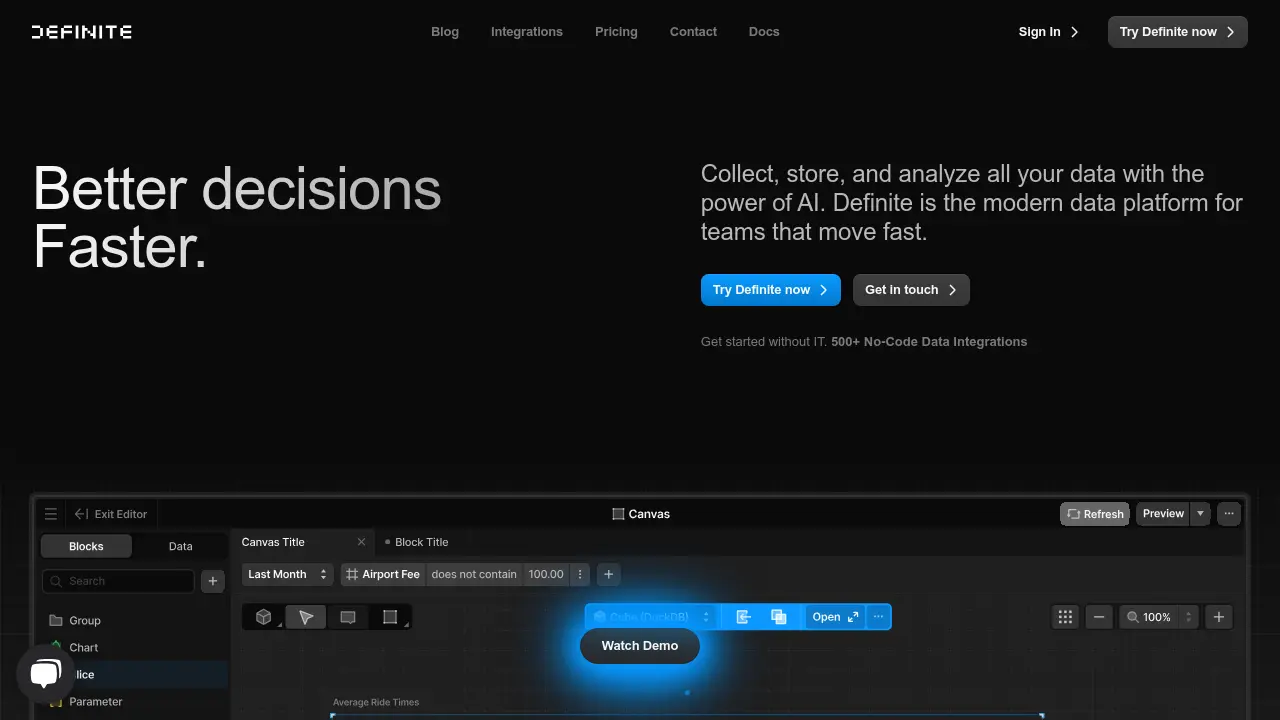Definite
Better decisions Faster.

Description
Definite is a modern data platform designed to empower teams to make improved decisions more quickly by leveraging AI for collecting, storing, and analyzing data. It consolidates the data stack by integrating functionalities typically handled by separate ETL, data warehouse, and business intelligence (BI) tools into a single, streamlined solution. The platform supports over 500 no-code data integrations, allowing users to connect various data sources without requiring extensive engineering resources.
Central to Definite is its ability to model data, establishing a consistent single source of truth for key metrics across an organization. Users can build interactive dashboards within minutes and embed them where needed. A key feature is 'Fi', an AI data analyst that understands the user's data context and provides instant insights in response to natural language questions. Built on scalable and high-performance open-source technologies like Iceberg and DuckDB, Definite offers a cost-efficient alternative to traditional data warehouses like Snowflake or BigQuery, providing robust analytics capabilities without the associated management overhead.
Key Features
- AI Data Analyst (Fi): Get instant insights via natural language queries.
- 500+ No-Code Data Integrations: Connect data sources easily without coding.
- Unified Data Platform: Combines ETL, Data Warehouse, and BI functionalities.
- Data Modeling: Create a single source of truth for business metrics.
- Embeddable Dashboards: Build and share visualizations quickly.
- Definite Lakehouse: Scalable and high-performance data infrastructure (Iceberg & DuckDB).
- SQL & API/SDK Access: Query and access data programmatically.
- Data-Team-as-a-Service: Includes onboarding and support.
Use Cases
- Streamlining business intelligence for tech companies and startups.
- Automating data reporting and analysis for e-commerce businesses.
- Enabling data-driven decision-making for non-technical teams.
- Replacing complex and costly traditional data stacks.
- Optimizing marketing spend and inventory management.
- Centralizing data analytics into a single platform.
You Might Also Like
BentoML
Usage BasedUnified Inference Platform for any model, on any cloud
Bark
Free TrialAI-Powered Online Safety Monitoring for Kids
CareClinic
FreemiumTake control of your health with personalized insights and daily actions.
AI Face Studio
FreemiumAdvanced AI for Face Swaps, Editing & Transformations
Premonition Analytics
Contact for PricingLawyers By Win Rate™